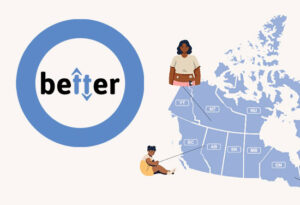
Update: May 3, 2021:
Ontario: As of May 10, 2021 anyone over 16 with type 1 diabetes can book a vaccine throughout the province.
Alberta: Children aged 12 -15 with type 1 diabetes are no longer required to present a doctor’s note when booking a vaccine. Anyone over 16 with type 1 diabetes is also eligible for a vaccine.
Update: April 27, 2021:
We have received many questions about vaccination for children and adolescents with T1D. Below is the latest recommendation from the National Advisory Council on Immunization (NACI):
9. NACI recommends that COVID-19 vaccines should not be offered routinely to individuals who are not in the authorized age group. (Strong NACI Recommendation)
a. However, a complete vaccine series with a Pfizer-BioNTech may be offered to individuals 12-15 years of age who are at very high risk of severe outcomes of COVID-19 (e.g., due to a pre-existing medical condition known to be associated with increased risk of hospitalization or mortality) or are at increased risk of exposure (e.g., due to living in a congregate care facility), if a risk assessment deems that the benefits outweigh the potential risks for the individual, and if informed consent with the individual and the parent or guardian includes discussion about the insufficiency of evidence on the use of COVID-19 vaccines in this population. (Discretionary NACI Recommendation)
Alberta is currently offering vaccines to individuals in the age group with T1D. We will keep monitoring the rest of Canada and provide updates accordingly once the provincial recommendations on children and adolescents are revised.
Original post:
April 26, 2021
Most of the country is now finding itself in the grips of the pandemic’s third wave, with many provinces back in lockdown. It has been a very long year, filled with fear and uncertainty – but hope is on the horizon. Vaccines have arrived and the rollout, while not without frustration, has been speeding up.
JDRF has been advocating for vaccination priority for people with type 1 diabetes (T1D) in most provinces and we’ve seen positive change.
While this is undoubtedly good news, we cannot let up now. Until enough people are fully vaccinated and the rate of new COVID-19 cases declines, we must continue to take every precaution to prevent exposure to both ourselves and those around us. We will not be safe until we are all safe.
We have learned that having T1D doesn’t increase risk of contracting the virus that causes COVID-19, but that adults with T1D are at increased risk of serious outcomes if they do develop the disease. Age and having other health concerns such as high blood pressure, underlying heart or lung conditions, obesity – and potentially also high HbA1c – seem to further increase risk of serious outcomes.
Below are updated recommendations from CoronavirusDiabetes.org on how to best protect yourself and others from contracting COVID-19. Because it is possible to spread COVID-19 even when a person is asymptomatic or pre-symptomatic, it is important to follow these guidelines at all times to protect ourselves and those around us.
If you have COVID-19 symptoms or believe you have been exposed to COVID-19, please contact your healthcare professional and get immediately tested.
T1D and COVID-19
Early detection of COVID-19 or other health issues can be lifesaving – if you get sick, get treated quickly.
Measure temperature daily with a thermometer and check your heart rate with a watch. Track any changes.
Never stop taking insulin or other medications, even when you become sick. Discuss insulin or other medication dosage changes with a doctor.
Make sure you have a diabetes-specific sick day management plan ready, just in case.
Know the warning signs of diabetic ketoacidosis (DKA) and seek immediate medical attention for symptoms including fruity smelling breath, vomiting, weight loss, dehydration, confusion, and hyperventilation.
Higher than average blood sugar levels in individuals with diabetes are a risk factor for more severe COVID-19 outcomes. Here are some tips to help you maintain more consistent blood glucose readings:
- Test blood sugar levels more often if you are under more stress than normal.
- Contact your doctor or health professionals, ideally over a virtual visit, if your blood glucose numbers are consistently out of range.
- Familiarize yourself with how to check for ketones. If you have adequate supplies, check for ketones regularly regardless of blood sugar levels.
- Make sure you have enough supplies (test strips, glucagon, pens etc.) on hand.
- Consider joining a T1D community, and take advantage of JDRF support.
- Being overweight/obese and smoking are also major risk factors for more severe COVID-19 outcomes – try and maintain a balanced diet along with daily activity.
- If you smoke or vape, it’s time to quit.
- Try and get good sleep. At least 7 hours if you’re an adult. And a minimum of 9 hours for children.
Reach out for help if you are overwhelmed and finding it difficult to manage your T1D along with the added stress of protecting yourself from COVID-19. Speak to your healthcare provider or support network about accessing additional resources and help.
For you and your loved ones:
- Basic precautions save lives
- Wash your hands every time you come home, or after handling/opening a delivery/package etc. Always maintain social distancing from non-household members, including while outdoors. Wear a cloth mask or face covering any time you’re within 2 meters/6 feet of individuals outside your home, especially in settings where social distancing is not possible. The mask should be ideally 3 layers and include a filter and be very well fitted to your face. Check to ensure that air isn’t escaping from the sides or top of the mask.
- Avoid prolonged exposure to aerosolized particles – e.g. indoor spaces with low ventilation, especially featuring loud conversation or singing. Avoid spending time indoors anywhere that is not your household without a well-fitted face covering.
- Cough or sneeze into your elbow or a tissue and avoid touching your face.
- Minimize trips outside of your home and try to avoid busy times or crowds when you do.
While these are the same precautions we have been advised to take throughout the pandemic, it’s not yet the time to relax these restrictions. By adhering to these guidelines, you can better protect yourself and your loved ones.




